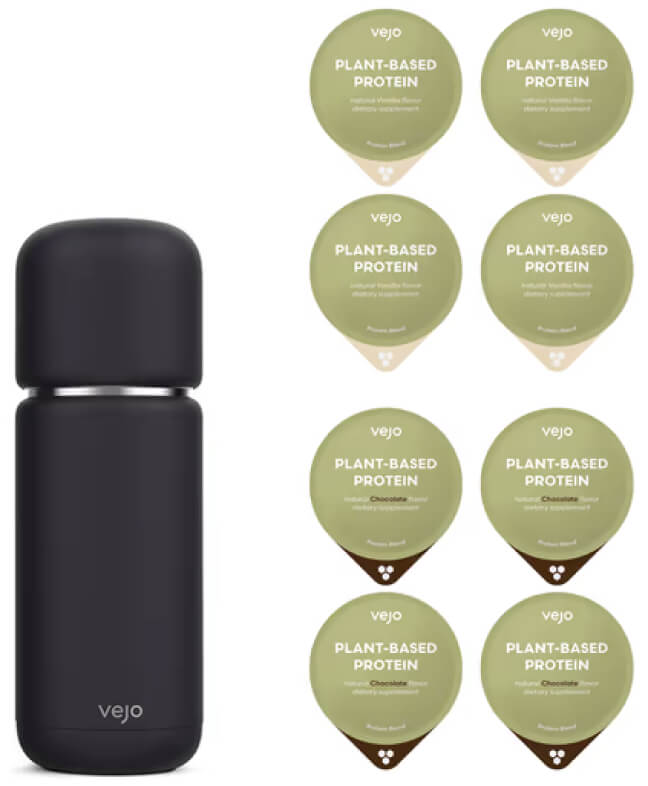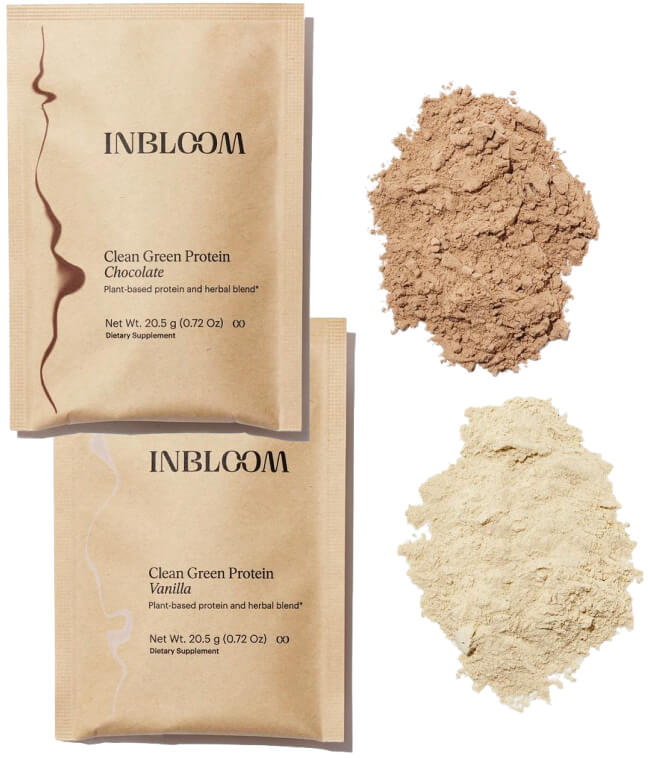[ad_1]

Photo courtesy of Amanda Sanford for Jenni Kayne; styling by Ali Primrose

Hypothesis and Emerging Research
Preventing Low-Blood-Sugar-Induced Hunger and Anxiety
Preventing Low-Blood-Sugar-Induced
Hunger and Anxiety
May 19, 2022
Some of us know when we have low blood sugar. I become hungry, weak, faint, and, I’m told, irritable. I’m very aware why I’m feeling this way and I know that I should eat. On the other hand, my husband becomes irrational and irritable when he has low blood sugar, but he does not feel hungry and he does not link his bad mood to the need to eat. That’s up to me.
I’ve been dealing with low blood sugar for many years, so I thought I knew all about it. But recently I learned some things that seem revolutionary to me. Biochemist and author Jessie Inchauspé, MS (@GlucoseGoddess), has translated cutting-edge science into hacks to prevent swings in blood sugar. Hacks that work even for someone with a sweet tooth and lack of self-control like me. And Ellen Vora, MD, board-certified in psychiatry, has found that low blood sugar appears to be a major cause of anxiety and panic attacks in her patients.
“
‘Eating my food in the right
order changed my life,’ said Inchauspé.
”
If this hits home for you, you’ll be happy to know that both experts have recently published books on these topics. Vora is the author of The Anatomy of Anxiety: Understanding and Overcoming the Body’s Fear Response. Inchauspé is the author of Glucose Revolution: The Life-Changing Power of Balancing Your Blood Sugar. When I spoke to Inchauspé, she told me, “Eating my food in the right order changed my life.”
This information is valuable both for those who want to minimize high blood sugar after meals and for those concerned with low blood sugar. It’s all about smoothing out the peaks and valleys.
What Is Low Blood Sugar?
Blood sugar refers to glucose. It comes from the carbohydrates you eat; for example, starch is long chains of glucose. Table sugar—sucrose—is made of glucose and fructose. Your body wants sufficient glucose in the blood to provide fuel to cells, especially in the brain. When glucose is low and you feel symptoms, the technical term is “hypoglycemia.”
I was told for years that low blood sugar was rare, that my blood sugar was not dipping low enough to cause symptoms, and that something else must be going on. Luckily, we now have data collected from thousands of people wearing continuous glucose monitors, and we know that post-meal dips in blood sugar are common. And it looks like the bigger the post-meal dip, the hungrier you get, the sooner you eat, and the more you eat.
What Causes Low Blood Sugar?
The short answer: too much of the hormone insulin. Insulin is necessary to lower blood sugar after a meal, but too much of it will lower blood sugar more than intended. People with diabetes carefully calculate how much insulin to inject, because very low blood sugar can be dangerous.
In people without diabetes, sometimes the body makes more insulin than is necessary to deal with the carbs they’ve eaten. The response can be excessive when a sugary drink or other processed carbs quickly flood the body with sugar. The body doesn’t always accurately predict how much insulin will be needed, and if it makes too much, blood sugar may sink to lower than pre-meal levels. The largest dips in blood sugar come after meals with the highest blood sugar peaks.
Note: When you suspect that you have low blood sugar, two things to avoid that may lower blood sugar even further are alcohol and exercise.
How Do You Know? What Are the Symptoms of Low Blood Sugar?
A common symptom of low blood sugar is hunger and craving carbohydrates, which is logical since consuming carbs raises blood sugar. Inchauspé says typical symptoms include “being hungry every 90 minutes or shortly after eating; having intense cravings for any sweet foods; and feeling like you need to eat something right now.”
But not everyone responds by getting hungry, and the need to eat is not always obvious. Other symptoms include being irritable, irrational, and, as Vora discussed on an episode of The goop Podcast, anxiety and panic attacks. “With anxiety, the first place my mind goes is to blood sugar,” she said. “It’s such low-hanging fruit because it happens a lot and it’s a common cause of unnecessary stress and anxiety.” Vora explained that the body responds to a blood sugar crash with a stress response and that the stress response can feel synonymous with anxiety. “For many of my patients, their anxiety feels like such a part of them, so inescapable, an identity that we ascribe so much meaning to,” she said. “But sometimes it’s really just the brain making sense of a physical sensation.”
“
Vora has noticed a link between processed carbs and panic attacks in her patients.
”
Vora has noticed a link between processed carbs and panic attacks in her patients: “If I meet somebody who tells me they’re having panic attacks, I do reconnaissance around the patterns and timing of their panic. Often I’ll see a pattern emerge, which is that it relates to when they’ve missed a meal or they’ve had refined carbs, something sweet, or as I call it, coffee drinks that are secretly milkshakes, and so their blood sugar spikes. That’s chased by insulin, then the blood sugar crashes.”
If you are unable to wait for the next meal, a quick—and sometimes necessary—fix for low blood sugar is to drink a cup of orange juice or eat a bit of candy or crackers. But there is a way to prevent low blood sugar and stop needing to rely on a food stash.
Preventing Low Blood Sugar
The obvious way to reduce post-meal blood sugar peaks and valleys is to avoid high-carb foods: desserts, pasta, rice, bread, sweet drinks, juice, coffee drinks that are secretly milkshakes, and even fruit. Foods that contain primarily protein and fat—such as meat, seafood, eggs, and cheese—don’t cause blood sugar spikes. Inchauspé suggests, “Switch to a savory breakfast that is centered around protein and avoid anything sweet except whole fruit for taste. Breakfast is incredibly powerful, and it controls our hunger hormones and how we feel for the ensuing 24 hours.”
But alternatively—and more innovatively—Inchauspé says we can simply change the order in which we eat foods. “We can eat the exact same meal, but if we eat the constituents of that meal in the right order, we can cut the glucose and insulin spikes,” she says. “The right order is veggies first, proteins and fats second, and starches and sugars last. The fiber in the vegetables coats the intestine and creates a protective mesh for the rest of your meal to come through.” Soluble fiber slows down the absorption of sugar, blunting blood sugar peaks.
“
Inchauspé says that if you make only one change, it
should be adding a green starter to every meal.
”
Inchauspé says that if you make only one change, it should be adding a green starter to every meal. In my family there was a long-standing disagreement as to whether a green salad should be eaten at the beginning of a meal or at the end, as is common in Europe. I’d say the beginning of the meal (my choice) wins.
Vegetable fiber isn’t the only thing that can slow down digestion, and research has shown that protein and fat meal starters can also be useful for blunting blood sugar spikes. The bottom line is: Try eating carbs last. And there’s some evidence that apple cider vinegar—a tablespoon in a glass of water—with a meal may be helpful, possibly in part by slowing digestion.
-
Helpful Products for Smoothing Blood Sugar
-
 Sweetkick
Sweetkick
SUGAR CONTROL TABLETS
goop, $20SHOP NOWIf you would like help developing a healthier relationship to sugar, the ingenious world of plants has a solution—as usual. An extract from Gymnema sylvestre can help suppress the taste of sweetness and may help reduce the appeal of sugary foods. Sweetkick has formulated this extract into mints that you can use before meals or snacks.*
-
 Vejo
Vejo
POD BASED BLENDER SYSTEM
goop, $130SHOP NOWPopping a pod into the little Vejo blender is an easy way to get a generous serving of protein—from organic pea, chia seed, millet, amaranth, buckwheat, and quinoa—without added sugars. And it includes an enzyme blend to help digest proteins.*
-
 INBLOOM
INBLOOM
CLEAN GREEN PROTEIN – VANILLA
goop, $49SHOP NOW
INBLOOM
CLEAN GREEN PROTEIN – CHOCOLATE
goop, $49SHOP NOWOr if you’re looking for convenient packets of protein plus botanical boosts to add to your favorite smoothie, INBLOOM makes vanilla and chocolate flavors. There’s protein from pea, chickpea, and chia seeds; cinnamon; ginger; and extracts from reishi mushrooms, elderberries, and dandelion root.
-
 Dr. Nigma
Dr. Nigma
B FAMOUS
goop, $45SHOP NOWIf you’re taking a good multivitamin, fine. If not or if you’d like extra B vitamins, Dr. Nigma Talib has formulated this high-potency supplement with B vitamins to support healthy energy and sugar metabolism. As part of the normal process for sustaining healthy blood sugar levels, vitamin B6 helps the body break down glycogen, releasing glucose. And B6 plays a unique role interacting with blood sugar to help maintain a healthy circulatory system.*
Related Content on goop
Gerda Endemann, goop’s senior director of science and research, holds a BS in nutrition from the University of California at Berkeley and a PhD in nutritional biochemistry from the Massachusetts Institute of Technology. Endemann has conducted basic research on heart disease, fat metabolism, and nutrition in academic laboratories and in biotech, and she has served as an adjunct faculty member at Stanford University.
This article is for informational purposes only. It is not, nor is it intended to be, a substitute for professional medical advice, diagnosis, or treatment and should never be relied upon for specific medical advice. To the extent that this article features the advice of physicians or medical practitioners, the views expressed are the views of the cited expert and do not necessarily represent the views of goop.
*These statements have not been evaluated by the Food and Drug Administration. These products are not intended to diagnose, treat, cure, or prevent any disease.
We hope you enjoy the books recommended here. Our goal is to suggest only things we love and think you might, as well. We also like transparency, so, full disclosure: We may collect a share of sales or other compensation if you purchase through the external links on this page.
[ad_2]
Source link

